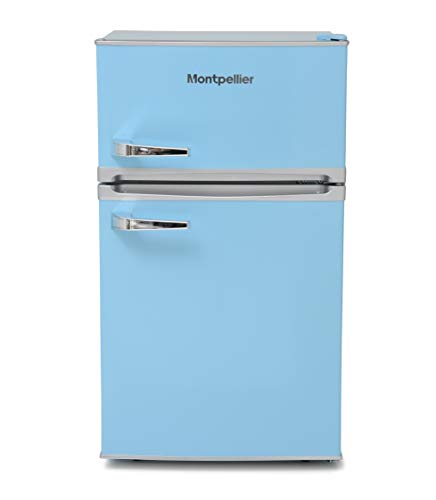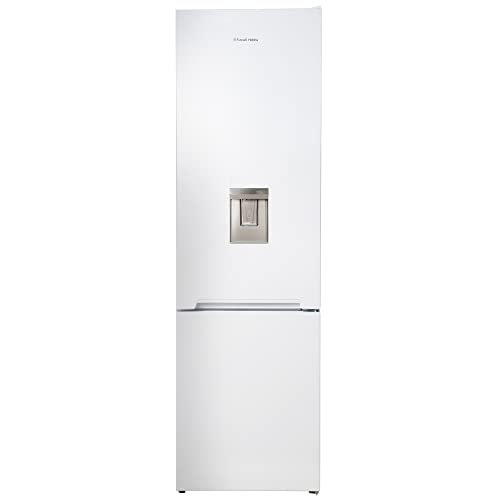
Frydge UK
Overview
-
Sectors Entertainment
-
Posted Jobs 0
-
Viewed 148
Company Description
The Comprehensive Guide to Refrigerators in the UK

Refrigerators are an indispensable part of modern households, serving as the backbone of food preservation and storage. In the United Kingdom, where the climate can vary from mild to cold, choosing the right refrigerator is crucial for maintaining the freshness and quality of food. This article delves into the various aspects of refrigerators in the UK, including types, features, energy efficiency, and maintenance tips.
Types of Refrigerators
-
French Door Refrigerators
- Description: These refrigerators feature two doors on the top for the fridge and a bottom drawer for the freezer. They are known for their spacious compartments and sleek design.
- Pros: Large storage capacity, easy access to frequently used items, and modern aesthetics.
- Cons: Generally more expensive and can be less energy-efficient.
-
Side-by-Side Refrigerators
- Description: These models have the fridge and freezer compartments side by side, each with its own door.
- Pros: Efficient use of space, easy access to both compartments, and built-in water and ice dispensers.
- Cons: Narrow shelves, which can be a challenge for large items, and higher initial cost.
-
Top-Freezer Refrigerators
- Description: The freezer is located at the top, with the buy fridge freezers compartment below.
- Pros: Affordable, energy-efficient, and easy to maintain.
- Cons: Less convenient for accessing frozen items, and limited storage space in the freezer.
-
Bottom-Freezer Refrigerators
- Description: The freezer is located at the bottom, with the fridge compartment above.
- Pros: Easy access to fresh food, more spacious freezer, and modern design.
- Cons: Can be more expensive than top-freezer models, and less energy-efficient.
Key Features to Consider
- Energy Efficiency: Look for refrigerators with an A++ or A+++ energy rating. These models consume less electricity, which can lead to significant savings over time.
- Capacity: Consider the size of your household and your storage needs. A larger family might require a bigger refrigerator, while a smaller household can manage with a compact model.
- Smart Features: Some refrigerators come with smart features such as Wi-Fi connectivity, built-in cameras, and voice control. These can enhance convenience and functionality.
- Noise Level: If you have a small kitchen or live in a quiet area, consider a refrigerator with a low noise level.
- Interior Design: Features like adjustable shelves, door bins, and dedicated compartments for specific items (e.g., dairy, meat, and vegetables) can improve organization and usability.
Energy Efficiency and Environmental Impact
Choosing an energy-efficient refrigerator is not only good for your wallet but also for the environment. Here are some tips to ensure you select an eco-friendly model:
- Look for the Energy Label: The UK energy label rates appliances from A+++ (most efficient) to D (least efficient). Opt for models with the highest rating.
- Size Matters: A larger refrigerator consumes more energy. Choose a size that meets your needs without being excessively large.
- Regular Maintenance: Clean the condenser coils, check the door seals, and defrost the freezer regularly to keep your refrigerator running efficiently.
Maintenance Tips
Proper maintenance can extend the lifespan of your refrigerator and ensure it operates at its best. Here are some essential tips:
- Clean Regularly: Wipe down the interior and exterior surfaces with a mild detergent solution. Clean the condenser coils at least once a year to remove dust and debris.
- Check Door Seals: Ensure the door seals are tight and free from damage. A loose seal can lead to cold air escaping and increased energy consumption.
- Defrost the Freezer: If your freezer is not frost-free, defrost it regularly to prevent ice buildup.
- Avoid Overloading: Do not overfill your refrigerator, as this can block airflow and reduce efficiency.
FAQs
Q: What is the difference between a frost-free and a non-frost-free freezer?
- A: A frost-free freezer automatically defrosts itself, preventing ice buildup. A non-frost-free freezer requires manual defrosting, which can be a time-consuming task.
Q: How often should I clean my refrigerator?
- A: It is recommended to clean your refrigerator every three to six months, depending on usage. Regular cleaning helps maintain hygiene and efficiency.
Q: Can I place my refrigerator next to a heat source?
- A: It is best to avoid placing your refrigerator next to a heat source such as an oven or radiator. Heat can cause the compressor to work harder, leading to increased energy consumption and potential damage.
Q: What is the ideal temperature setting for a refrigerator?

- A: The ideal temperature for a refrigerator is between 0°C and 5°C (32°F and 41°F). For the freezer, the recommended temperature is -18°C (0°F).
Q: How can I reduce the noise level of my refrigerator?
- A: Ensure the refrigerator is level and not touching any walls or furniture. Place it on a flat, stable surface and check the door seals for any gaps. If the noise persists, consult a professional for further assistance.
Choosing the right refrigerator for your UK home involves considering various factors such as type, features, energy efficiency, and maintenance. By understanding the different options available and following the tips provided, you can make an informed decision that meets your needs and budget. Whether you opt for a sleek French door model or a budget-friendly top-freezer, a well-chosen refrigerator will serve you well for years to come.
